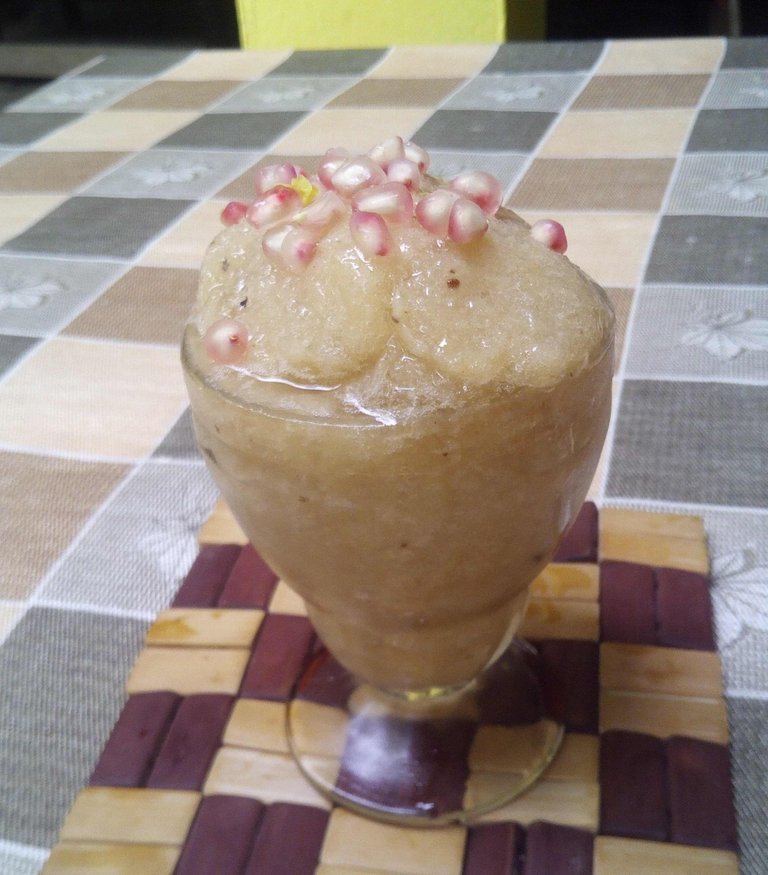
Saludos en esta nueva semana, querida familia vegana. Creo que todo niño venezolano, latinoamericano y quizás asiático e hindú, ha probado alguna vez en su vida el helado de tamarindo. Digo esto, porque los árboles de tamarindo crecen estupendamente en la mayoría de estos países, y son árboles enormes y generosos con sus frutos. En el caso de Venezuela, es común ver en muchos pueblos, la venta de helados artesanales y de “raspaos”, que no es otra cosa que una especie de sorbete hecho a base de hielo molido al cual se le añade el jugo de alguna fruta, ya sea granadina, tamarindo, coco, limón, etc. Los helados que se comercializan en vasos o bolsas, son básicamente el jugo de alguna fruta o de alguna esencia, muy endulzados, que se congelan; y por lo general, el tamarindo siempre está presente en la oferta de estos helados, pues es una fruta económica y muy rendidora.

A mí me gustan mucho los helados artesanales, especialmente cuando son hechos a base de frutas, sin otros añadidos, ya que el sabor es más auténtico y sano; sin embargo, hay algo que me frustra cuando como helado de tamarindo, ya sea que lo haya comprado o preparado yo, y es que por lo general no se homogeniza la mezcla, y queda todo el sabor y la pulpa del tamarindo en la parte superior del helado, y abajo, con mucho menos sabor, está el agua. Esto lo resolví en casa, aplicando la tradicional técnica de romper los cristales de las mezclas mientras está en proceso de congelación, pues esta acción, además de darle una textura suave y cremosa a los helados, permite que sea mucho más uniforme el sabor.

And for today I wanted to experiment, give a different touch to this tamarind ice cream recipe. I recently made an invert sugar, and according to what I researched, this type of sugar has greater sweetening power and reduces the size of the crystals in foods when freezing them, which makes it a great option for make ice cream. In the bibliography that I consulted, it said that only in fluid recipes, such as creams, ganaches, spreads, etc., this sugar could replace the sweetener 100%. For ice creams, it was recommended to replace 15% to 25% of the sweetener; However, I wanted to do an experiment, and I replaced 100% of the sugar or jaggery that I usually use to make this ice cream, and here is the result, which I have called: SORBET TAMARIND or TAMARIND SNOW. With that said, let's get to my recipe.
Y para hoy quise experimentar, darle un toque diferente a esta receta de helados de tamarindo. Recientemente elaboré un azúcar invertido, y de acuerdo a lo que investigué, este tipo de azúcar tiene mayor poder endulzante y reduce el tamaño de los cristales de los alimentos al momento de congelarlos, lo que le convierte en una opción estupenda para hacer helados. En la bibliografía que consulté, decía que sólo en recetas fluidas, como cremas, ganaches, untables, etc.; esta azúcar podía sustituir al 100% el endulzante. Para los helados recomendaba sustituir en un 15% a 25% el endulzante; no obstante yo quise hacer un experimento, y sustituí al 100% el azúcar o papelón que suelo utilizar para hacer este helado, y aquí está el resultado, el cual he llamado: SORBETE O NIEVE DE TAMARINDO. Dicho esto, vamos a mi receta.

THE RECIPE / LA RECETA
Preparation time: Making this ice cream takes time, since I recommend removing the shells from the tamarinds and manually removing the seeds, and then boiling them for 30 minutes. Next come the blending, cooling and freezing processes, which can vary depending on the refrigerator. In parallel, it is necessary to break the ice crystals every hour or two hours, until the ice cream is firm. In this case, it took me two days to make this recipe, so the timing is inaccurate, but it should be made in advance.
Servings: 1.5 liters of tamarind ice cream.
The amounts of ingredients that I present below can be varied according to each person's taste and availability.
- 100 grams of tamarind pulp.
- 1 liter of water to boil the tamarind pulp.
- 500 ml of additional water.
- 120 ml of invert sugar.
- 1 pinch of salt and pepper.
- Pomegranate seeds to decorate.
- Bowl, measuring cups, teaspoon, cup, blender, etc.
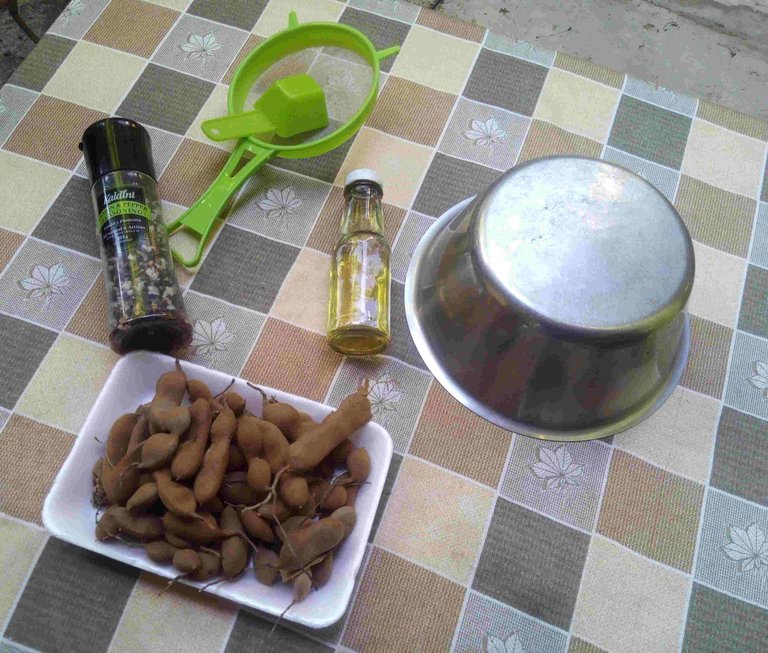
Tiempo de preparación: Elaborar este helado lleva su tiempo, ya que recomiendo quitar las cáscaras a los tamarindos y eliminar manualmente las semillas, para luego hervirlos por 30 minutos. Después vienen los procesos de licuado, enfriamiento y congelación, que puede variar de acuerdo al refrigerador. En paralelo se requiere romper los cristales de hielo cada hora o cada dos horas, hasta que el helado esté firme. En este caso, tardé dos días haciendo esta receta, así que el tiempo es inexacto, pero debe hacerse con antelación.
Raciones: 1.5 litros de helado de tamarindo.
Las cantidades de ingredientes que a continuación presento, pueden variarse de acuerdo al gusto y disponibilidad de cada quien.
- 100 gramos de pulpa de tamarindo.
- 1 litro de agua para hervir la pulpa de tamarindo.
- 500 ml de agua adicional.
- 120 ml de azúcar invertido.
- 1 pizca de sal y pimienta.
- Semillas de granada para decorar.
- Bol, tazas medidoras, cucharilla, copa, licuadora, etc.

Si se cosecha o se compran los tamarindos con cáscara, es necesario eliminar la cáscara, lo cual se hace con las manos.
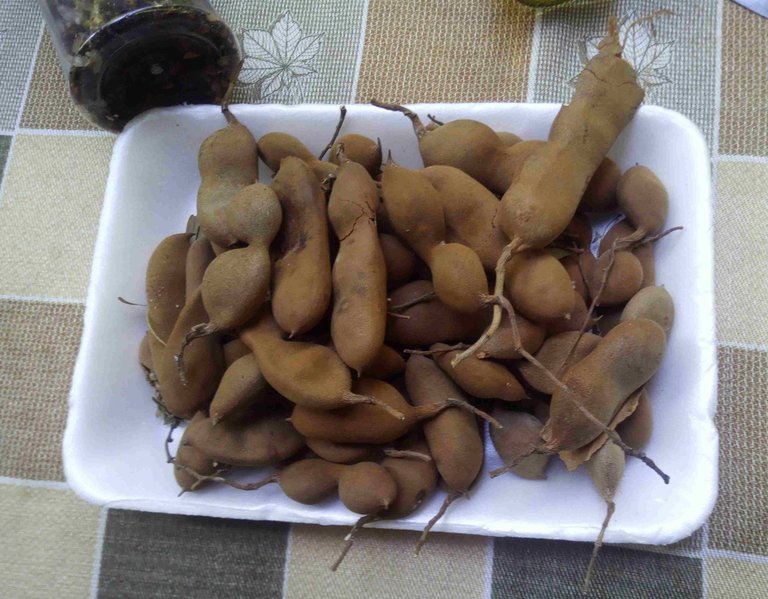
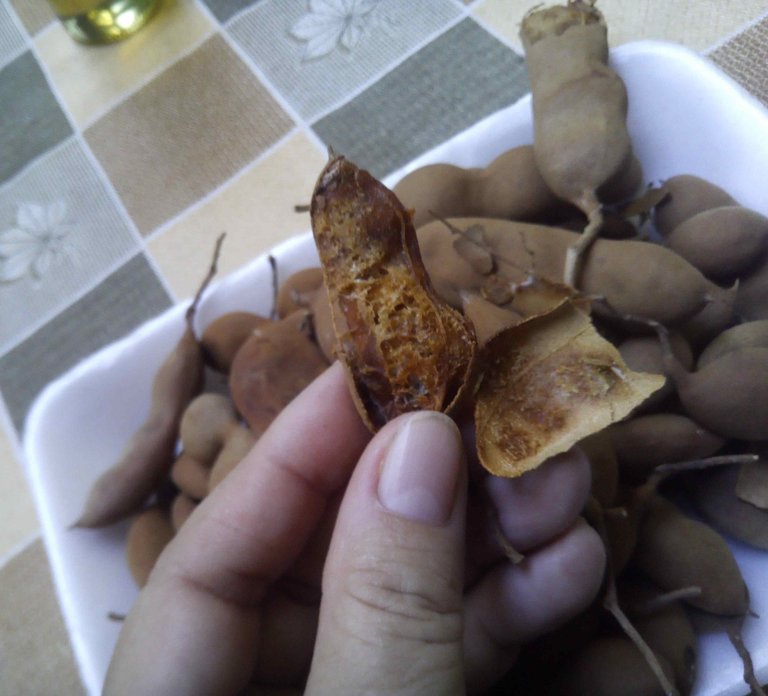
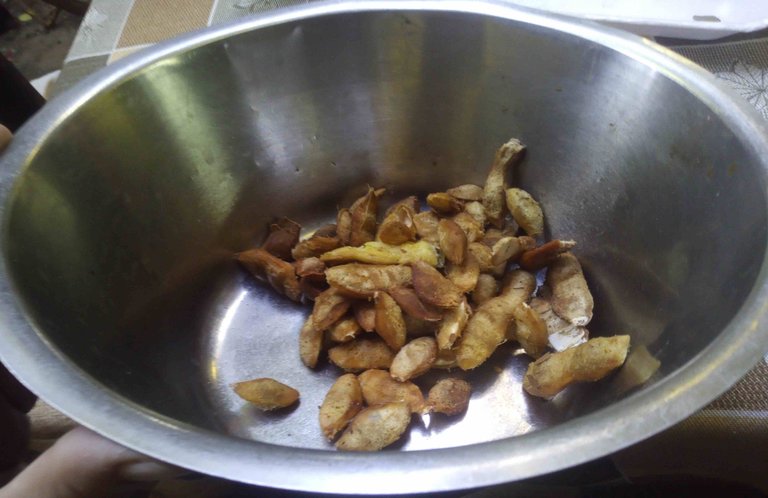

En caso de que las frutas aún tengan la semilla, yo recomiendo extraerlas manualmente, abriendo cada tamarindo con un cuchillo y eliminándolas. Es un proceso laborioso, pero asegura que el sabor sea óptimo.
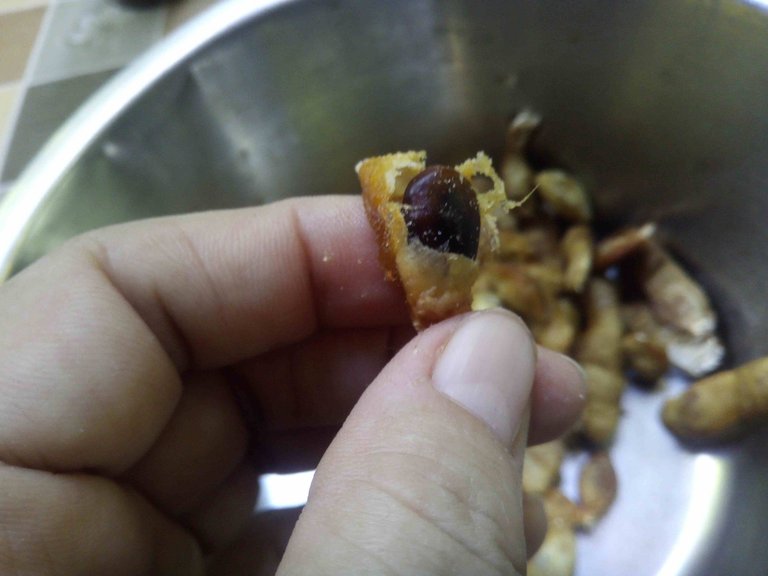
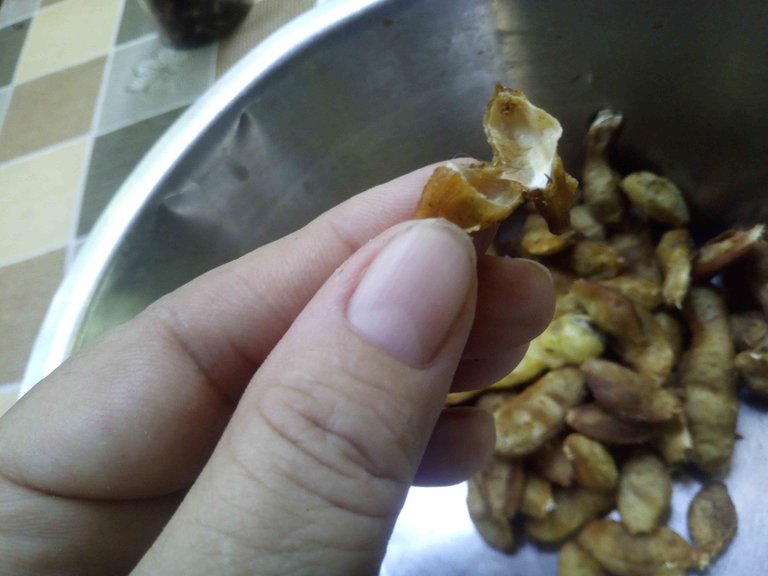
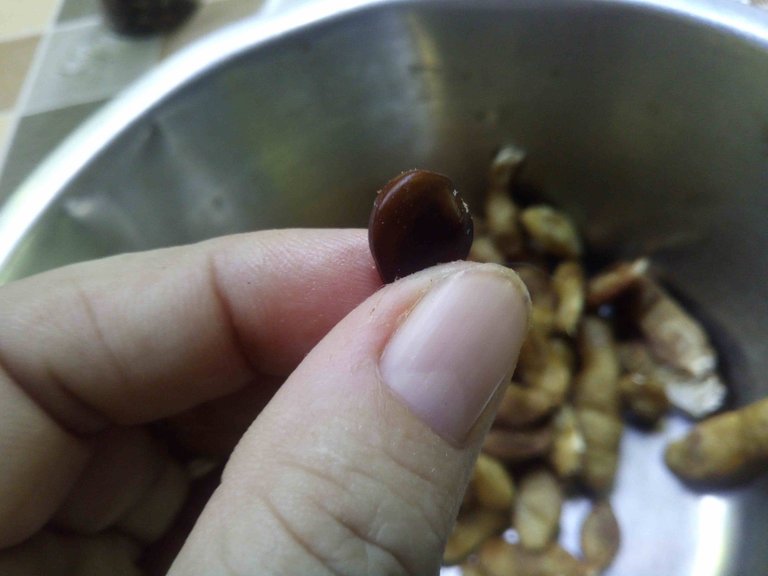


Colocar la pulpa de tamarindo en una olla de acero inoxidable o de vidrio templado, añadir 1 litro de agua, una pizca de sal y pimienta, (éstas aseguran que las papilas gustativas se activen al comer el helado, por lo que se disfruta más), y llevar esto a fuego medio por 30 minutos, removiendo eventualmente.
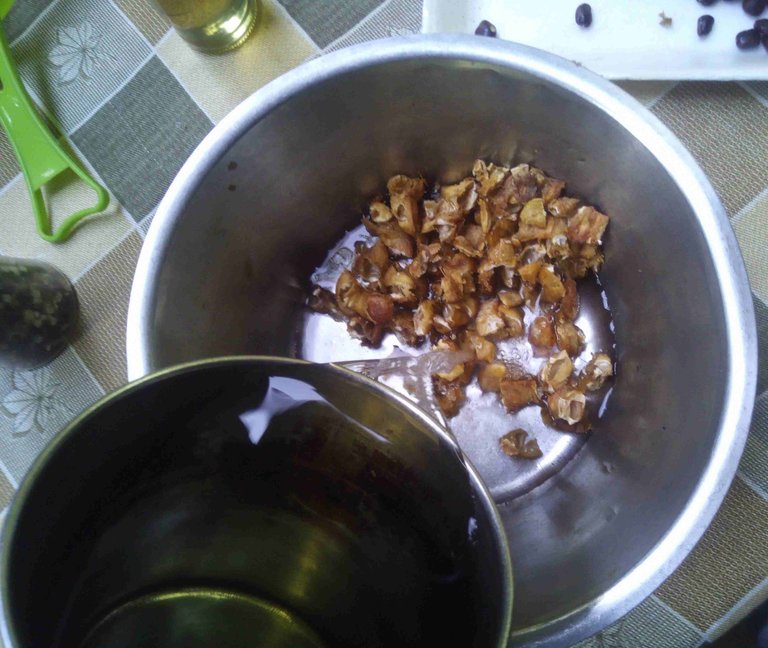



Transcurrido el tiempo indicado, retirar del fuego y esperar a que enfríe. Colocar en el vaso de la licuadora, añadir el agua restante, el azúcar invertido y la pizca de sal y pimienta. Posteriormente licuar a alta velocidad por 2 minutos o hasta que la pulpa se haya licuado completamente. Colocar la mezcla en recipiente de vidrio, plástico o acero y llevar al congelador.




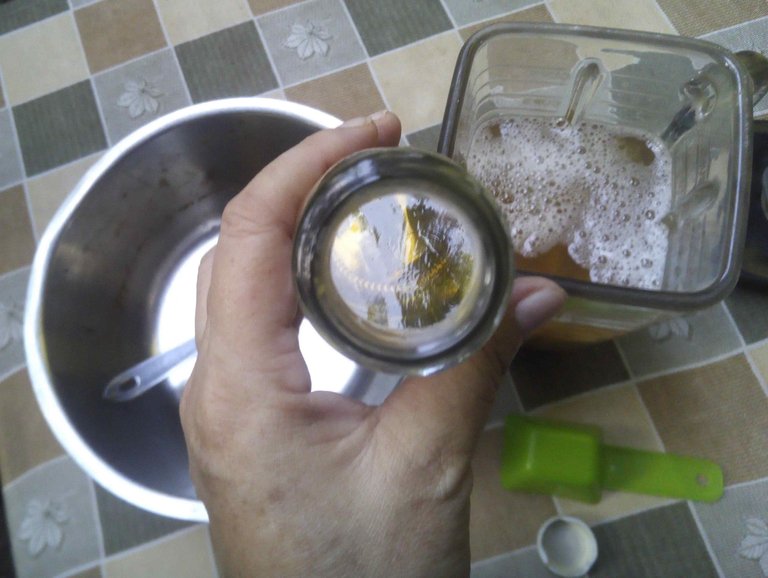

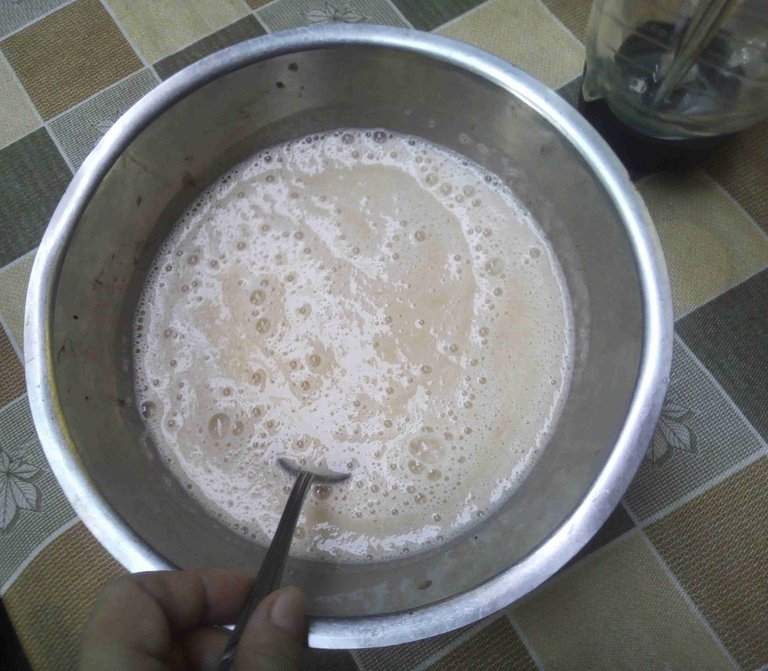

Cada hora o cada dos horas hacer el siguiente procedimiento: Sacar la mezcla del congelador y con un batidor eléctrico o uno manual (como el que usé yo), romper los cristales de hielo y volver a colocar la mezcla en el congelador. En esta ocasión hice este proceso tres veces, y es lo que asegura que el helado sea cremoso, más palatable y fácil de comer. Al final, como ya era de noche, por lo que decidí dejar la mezcla hasta el día siguiente. Sí note, en comparación a ocasiones anteriores, que la mezcla tardaba en congelarse, lo que atribuí al uso del azúcar invertido.
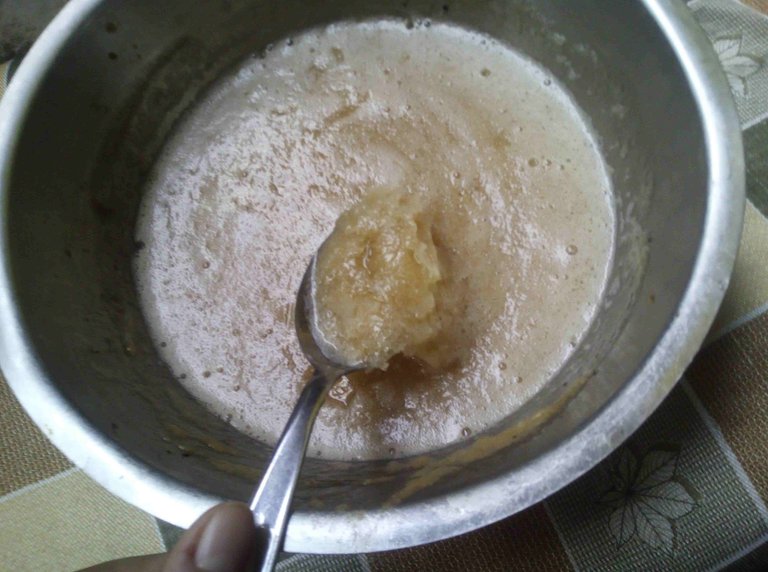


Al día siguiente saqué la mezcla del congelador, pero era imposible manejarla con las varillas manuales, así que esperé a que descongelara un poco y la metí en el vaso de la licuadora, tratando de suavizar el helado, lo que dio un resultado aceptable.

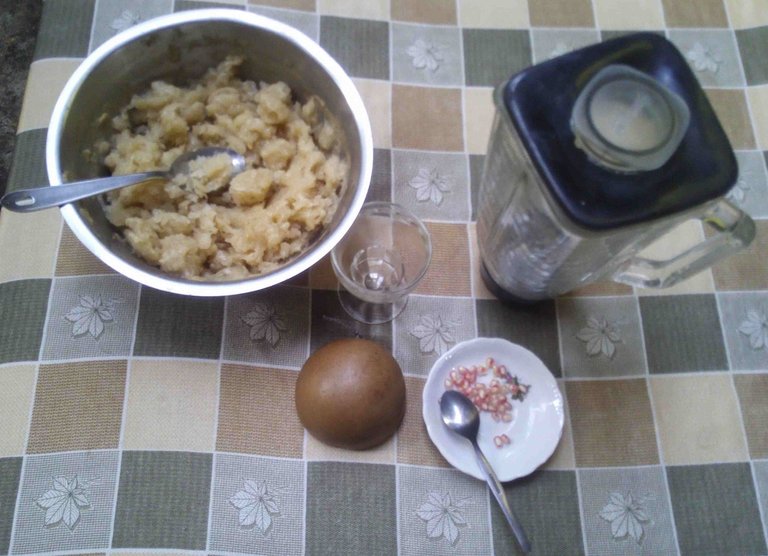
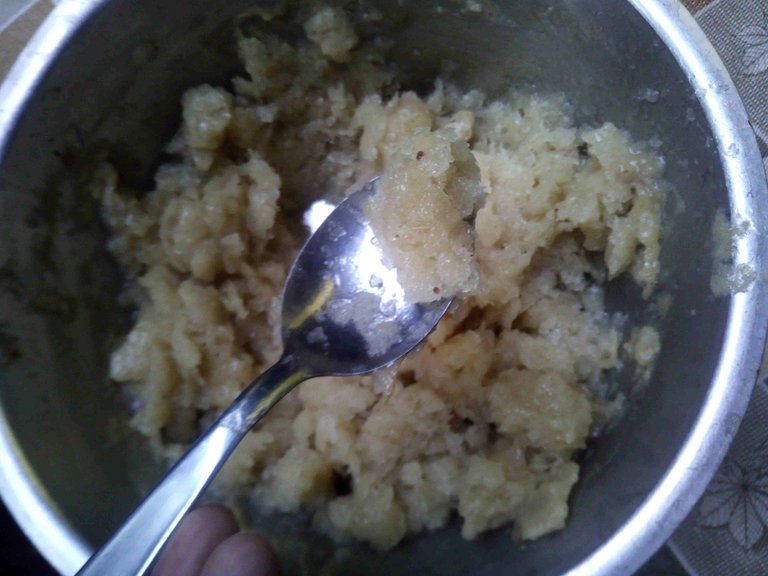



Serví el helado en una copa, ayudándome con una “totuma” para darle la forma de domo en la parte superior, no obstante, por el calor ambiental que estaba haciendo (36 °C) y por el uso al 100% del azúcar invertido, se derretía muy rápido y no lograba cohesionarse para dar la forma adecuada. Le coloqué un topping de semillas de granada, que siempre son deliciosas y crujientes. Quiero concluir este post diciendo, que los Ingenieros en Alimentos e Ingenieros Químicos, conocen su profesión, y si ellos dicen que en las recetas de helados se sustituye por azúcar invertido, sólo un 15% a 25% del total del endulzante, ellos tienen razón.


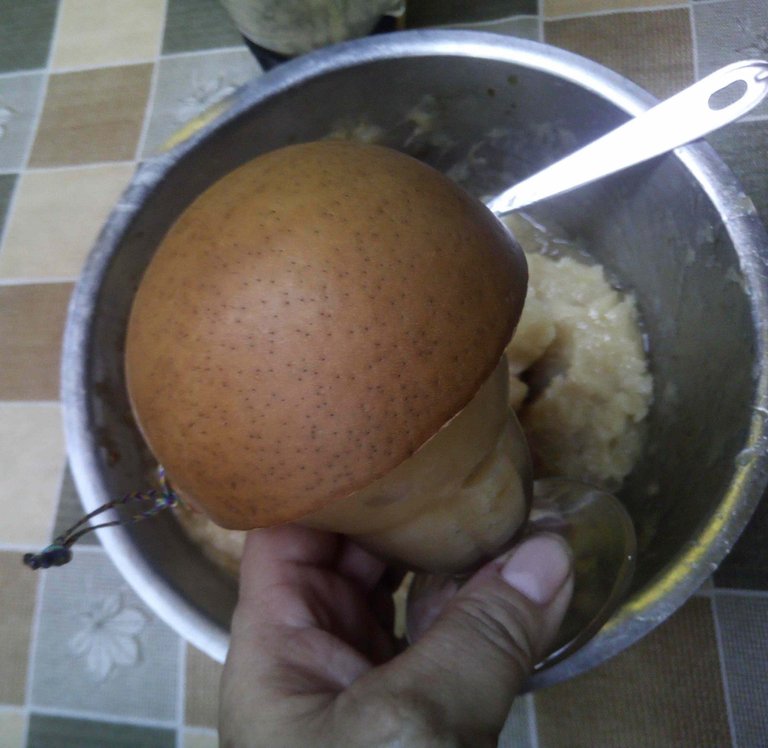




Puedo decir del sabor de este sorbete o nieve, que es delicioso, muy refrescante, cremoso. Le serví una copa a mi esposo, quien dijo que al final se le sentía un sabor como a leche condensada, ingrediente que obviamente no utilicé. Él incluso dijo que estaba ideal para la venta. Creo que le tomaré la palabra.
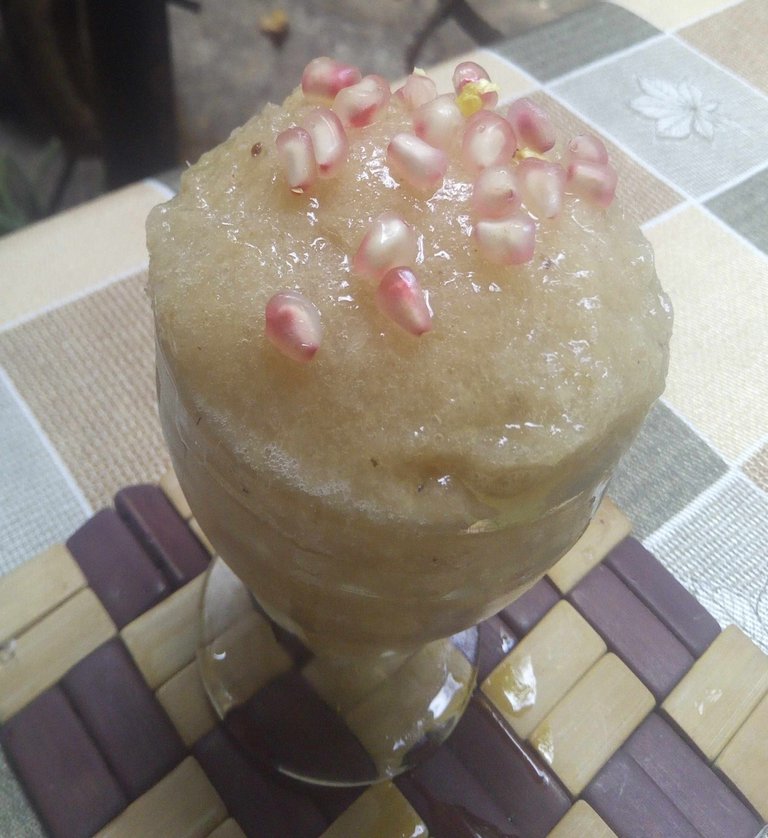


Aquí termino mi post de hoy, en el cual les he ofrecido una receta sencilla, económica, deliciosa, rendidora y también muy refrescante. Espero que se animen a seguir haciendo recetas veganas, que son deliciosas, nutritivas y compasivas con la Madre Tierra. ¡Abrazos!
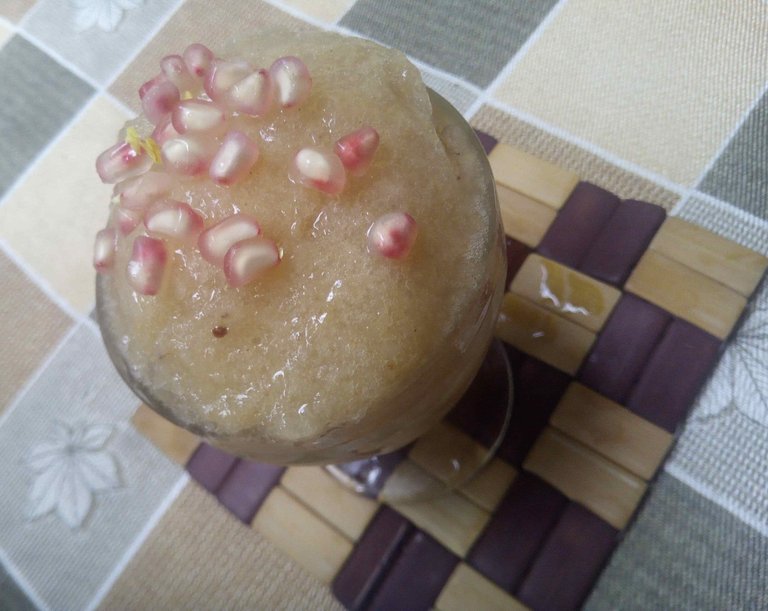

These photos are my own, and were taken with a UMIDIGI smarth phone / Estas fotos son de mi propiedad, y las tomé con un smart phone UMIDIGI
This time I'm using a divider that @doriangel gave me. Thank you very much for this beautiful gift. / En esta ocasión estoy usando un divisor que me obsequió @doriangel. Muchas gracias por este bello regalo.

Todo el contenido es de mi propiedad y está sujeto a derechos de autor // All content is my propertyand subject to copyrigh



Delegations welcome!
 Delegations welcome!
Delegations welcome!


Se me hace agua la boca jejejeje, qué ricura.
Hola, jajajajajaja, a mí también se me hacía mientras lo preparaba. Luego me comí dos copas. Gracias por pasar a leer y comentar. Saludos!
Thanks for the support @curator and @ewkaw!
El tamarindo es una frutica que siempre me ha gustado mucho, ese sabor acidito combinado con dulce hace que las papilas gustativas de relámpagos jajaja, estoy salivando sólo de imaginar el frìo del sorbete, el sabor del tamarindo uff! demasiado bueno amiga 🤤
Jajajajaja, ah bueno, ciertamente el tamarindo es súper sabroso, y así, en nieve, queda más allá de exquisito. Gracias por tu visita querido @edwing357, quizás te mande varios kilos de tamarindo para allá. Abrazos!
Siiiiii! me harías viajar a la niñez jajaja, aun tengo la boca salivando 🤣
Que delicioso se ve ese helado y sabiendo que es de tamarindo se me hace agua la boca, realmente me encanta. Te esmeraste en la presentación y tuviste un hermoso resultado aunque el calor haya hecho de las suyas, además que ese toping de semillas de granada le va genial.
Muchas gracias por compartir los resultados de tus experimentos y eso del azúcar invertido no lo conocía, gracias por la información.
Saludos!
Hola @verdesmeralda, gracias por el bonito comentario. Sí, el helado quedó bueno, y con el experimento comprobé que el azúcar invertido sí endulza más en comparación al azúcar normal, aunque no garantiza que se mantenga congelado el producto.
Que tengas un bonito día. Saludos.
Wow amiga que excelente post y que receta tan fantástica. En mi niñez solía comer "Raspado" de tamarindo que era mi sabor preferido. Saber aplicar la técnica para hacer helado y que quede cremoso tiene un gran valor. Me llama la atención que algunos vendedores de "tetas" en mi ciudad son muy cremosas y deliciosas. Estos helados que se hacen en bolsas para la venta son exquisitas pero en algunos noto diferencia. Unas tienden a hacerse hielo y otros son cremosos. Creo que muchos lo hacen con polvos químicos. Qué fantástico saber como hacer wque nuestros helados de frutas puedan quedar tan cremoso como el que nos muestras. Este post es muy valioso. Lo que tengo que aprender es lo del azúcar invertida. Leeré un poco más sobre esto. Felicidades por esta receta y gracias por compartir tu aprendizaje.Espero poner en práctica pronto.
El raspado de tamarindo era delicioso, y creo que era uno de los sabores más naturales que se conseguían, porque el de colita, limón, naranja y de coco, no lo eran, el sabor químico era muy notorio. Esta técnica es buena, ya que te sirve para hacer helados cremosos de cualquier sabor, incluso aquellos en los que uses lácteos. El azúcar invertida es sencilla, allí comparto el post, pero recuerda, sólo sustituir un máximo de 25% de azúcar invertida. Saludos @elamaria y gracias por la visita.
So delicious, like soft ice cream.
This is the first time I have seen tamarin prepared like this. Here I find it difficult to find sweet tamarins, the taste will definitely be very sour.
There are no sweet tamarinds, perhaps some are slightly sweeter than others, but they will always be sour. This technique allows you to achieve the creamy consistency of industrial ice cream. The only thing I recommend is not using 100% invert sugar, only a maximum of 25%.
Thank you very much for your visit @nurfay, greetings.
You're right, a little sweeter than the usual sourness. But I like both. a good idea to add invert sugar.
Se me hizo agua la boca al ver las imágenes de nuestro rico tamarindo. Y el helado se ve genial, además de la decoración tan llamativa. Excelente técnica amiga @sirenahippie, un abrazo
Jajajajaja, muchas gracias, sí, las imágenes de los tamarindos tienen ese efecto, de volvernos la boca agua. Gracias por tu visita y tu comentario.
Saludos @milik80